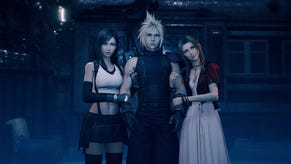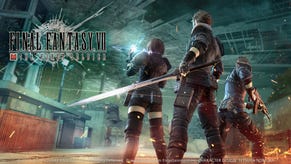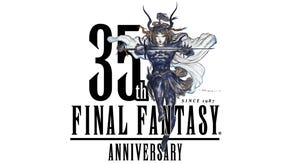Final Fantasy 7 at 26: Kitase on being inspired by Nintendo, discarded concepts, and Rebirth changes to come
In an exclusive interview, Yoshinori Kitase sheds some light Final Fantasy 7's development – and hints at changes to come in the Remake series' future.
Today marks a huge 26 years since Final Fantasy 7 first hit PlayStation in Japan, a vital release that would prove particularly earth-shattering once localised for the West a handful of months later.
Since then, the legend of Final Fantasy 7 has only expanded: with spin-offs, sequels, movies, and animated features. Its characters have appeared in countless other games, and of course FF7 remains the high watermark for success for the entire Final Fantasy series. That led to its critically acclaimed Remake, and you can be sure that while Final Fantasy 16 is a very different style of game, FF7’s shadow will loom large over even that game.
Late last year, around the time of Final Fantasy’s 35th anniversary, I got the opportunity to catch up with original FF7 director Yoshinori Kitase. Now one of the more senior stewards of the entire Final Fantasy series and currently serving as Producer on the FF7 Remake trilogy, I wanted to look back to the original FF7 and chat abouts its development, inspirations, and a few long-time fan mysteries.
In honour of FF7’s 26th anniversary, here’s our full chat:
VG247: I want to start by just going all the way back to 1994. The team finishes Final Fantasy 6, and you're thinking about the next game. You've said in the past that initially, the plan was to create another 2D project for the Super Famicom. What are your memories of the thinking and direction of the project at that early time?
Yoshinori Kitase: The plan to make a 2D Final Fantasy 7 began right after we released Final Fantasy 6, but it was cancelled after only two or three planning proposal meetings.
This was because me, Nomura, and many of the other project staff went to join the Chrono Trigger team. The re-launch of the cancelled Final Fantasy 7 project then happened after Chrono Trigger came out, but we had forgotten most of the discussions in those earlier planning meetings by then.
However, there was one idea proposed in them that was actually used for Final Fantasy 8 later. It was an illustration centring around a witch character that Nomura had drawn. [Editor’s Note: This concept became FF8’s Sorceress Edea.]

VG247: Okay, let’s get nerdy – in the FF 25th anniversary Ultimania books, an image was printed which showed a town from an isometric viewpoint, noted as an early concept for FF7 but using Locke from FF6 as a placeholder. Was this just a concept visual, or was it a prototype actively worked on?
Yoshinori Kitase: Moving to the PlayStation hardware that was capable of rendering in 3D CG, we had to think about how to evolve the visuals for the next FF game, without being held back by the logic that had gone before, and proposed a number of different visual styles.
That image was one of the proposed styles and represented the concept of an “orthodox evolution” that continued with a similar style to what was in Final Fantasy 6.
We continued looking into proposals for both pixel sprite graphics and 3D CG in parallel for a while, but ultimately settled on the 3D style that you see today.

VG247: You next have the 'SGI' demo, again featuring FF6 characters, and then the decision was taken to develop for PlayStation. The reasons for the switch from Nintendo have been well documented over the years – so rather than ask about that, I'm curious about how that felt at the time? Was there a concern that by leaving Nintendo, FF could be leaving its fanbase behind? Or was it invigorating to be on a new platform still building its identity and audience?
Yoshinori Kitase: At the time I was a fan of Nintendo’s hardware and games, and I still am, so it was a conflicted feeling. However, we were so busy working with new innovations in all aspects of game creation, such as 3DCG, the CD media and selling through convenience stores (in Japan), so I did not really have time to worry about it and just pushed on with the development.
Once the development on Final Fantasy 7 had progressed a certain way, I saw Mario 64 on the Nintendo 64 and its ushering in of new generation of 3D action games, and honestly, I was blown away by it.
However, it was a big motivation for us to create our own unique visual style, while still respecting such an amazing style of game.
VG247: Starting development on PlayStation, a 3D game like this was obviously a new unknown experience for the team. From your perspective, were there any specific inspirations you were looking towards to help navigate this new technology and style?
Yoshinori Kitase: We were stimulated by lots of PC games from Europe and America at the time.
In that era there were more and more games that utilised 3D coming out, such as 4D Sports Boxing, Alone in the Dark, Wing Commander, Ultima Underworld, and Heart of Darkness – these provided a lot of inspiration in establishing the visual style for Final Fantasy 7.

VG247: A unique thing about FF7 compared to later games is that it has different art styles – characters look very different on the field and in battle, and both styles of design are even used in pre-rendered CG scenes interchangeably. What was the thinking behind that decision, and why did you ultimately reverse it in FF8?
Yoshinori Kitase: This was a response to issues with memory limits and rendering speeds.
In exploration areas, such as the scenes in cities, we needed to have lots of characters on screen at once and the camera does not often move close up to them, so we had to keep the main character models down to under 400 polygons each.
On the other hand, the number of characters that appear in battle scenes is more limited and there are many times when the camera does a close-up of their faces as part of the presentation for the moves they do, so we were able to use 1000 polygons each here.
Accordingly, we created character designs that were optimised for the number of polygons available in each type of scene.

VG247: The FF7 International Bonus CD contained an interesting video of in-development footage of FF7, including some quite different CG backgrounds to the final, like a very different looking version of what I assume is Nibelheim. How iterative was development – was there a lot of redoing and significantly changing things as you went along? Do you have any specific memories about early builds, making changes, and improving the game?
Yoshinori Kitase: At the time, making the shift from 2D to 3D was very challenging so it was more a case of spending a long time and slowly but surely building up each location, rather than re-doing them over and over. The image you are referring to is a work-in-progress snapshot of that process.
Accordingly, if you look at it from the opposite direction, it was not easy to re-work things because of the amount of work we needed to roll-back in doing so, so I don’t remember changing the original story or specs for the game that we originally decided on.
VG247: Something I love about FF7 is the feeling that, at that time, the team were just adding and adding ideas, and not necessarily worrying about how something might fit in. The result is a world with amazing breadth – when you're in Midgar, it seems hard to even imagine a more traditional RPG location like Kalm would even exist in the same world. And when you're at Kalm, the idea of a place like the Gold Saucer feels outright futuristic. Then, suddenly, you're snowboarding! Was this a conscious idea during development, or was it something that just happened as artists got to grips with the 3D tools?
Yoshinori Kitase: During development, we had a policy of putting in as many of the interesting ideas that the team brought to the table as we could. Our thinking was not to worry too much about alignment or consistency and to treat it like a child’s toybox.
We felt that stuffing in as much cool and interesting stuff as possible would create an even bigger feeling of wonder and excitement. This was not so much a deliberate approach though, but more like the spirit that the Final Fantasy team had from the start.
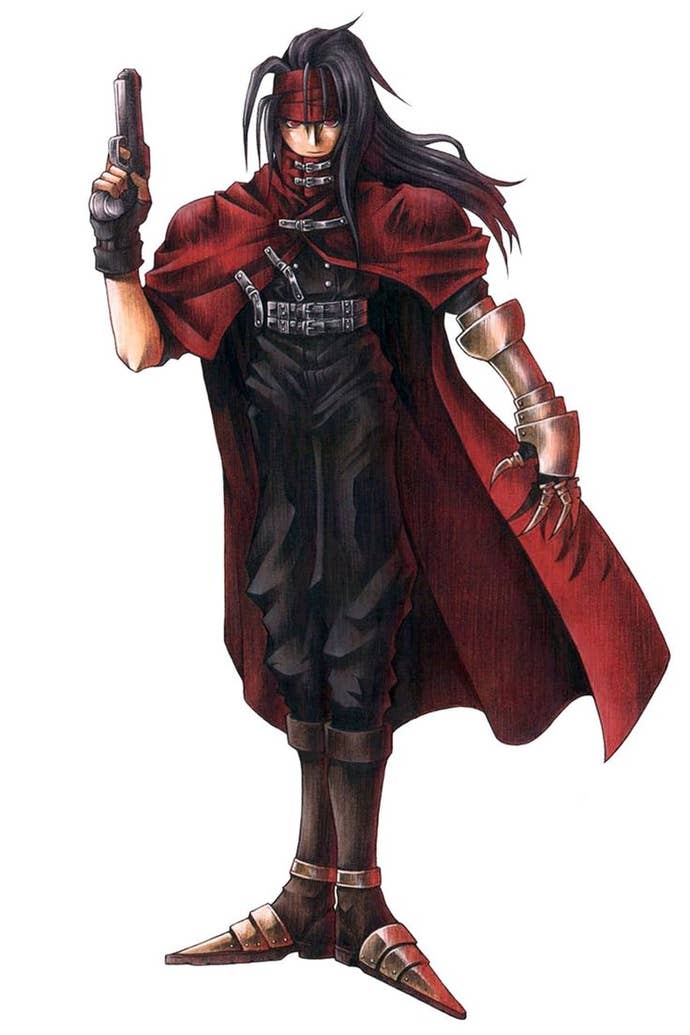
VG247: In an interview a few years ago, Nomura-san recalled a draft of the story where you had everybody but the three characters the player chooses for their party die when the cast parachutes into Midgar. You didn't remember this, he reminded you! But let me ask – if the game were like that, and it were you playing, which three characters would you have saved by having them in your party?
Yoshinori Kitase: I would pick Cloud because he is the protagonist of the story, Vincent because he was a character that I personally came up with and had a horror vibe that is quite rare in FF games, and Yuffie because she is so annoying but so difficult to hate.
VG247: I’m wondering if you’d be willing to solve an age-old mystery. If you follow certain side quests, you can get the key to re-enter Midgar in the late game. At this stage, if you enter the Sector 5 church, you see Aerith tending to the flowers – but when you step closer, she flickers and disappears, like a ghost. Strangely, talking to an unrelated NPC in a different area prevents this event from happening. For years, fans have debated the intended meaning of this event, or even if it is a glitch. Can you comment on it from the development side?
Yoshinori Kitase: I will leave this to the players' imaginations.
VG247: Going into the Compilation, you and the team had a chance to change, reveal, or 'retcon' elements of the story if you wanted to. For instance, Rufus and Tseng appear to die in FF7 – but then being revealed as alive in Advent Children, and even outright revealing that humans did survive Holy at the end. What was it like making story decisions like this; changing story elements and revealing new information without changing the impact of the original game?
Yoshinori Kitase: We approached the FF7 Remake project with the aim to make it something that could be enjoyed by both fans of the original game and people who did not know it.
I have also had experiences where a game that I loved and had a lot of fun with in the past was remade, and I bought it and played it out of the overwhelming nostalgia. It is enjoyable for a while, but the fun from that nostalgia only really lasts through the first sections. I realised this halfway through and didn’t carry on playing.
Because of this, I decided that Final Fantasy 7 Remake would not just appeal to nostalgia, but would include a new story as well to feel both nostalgic and fresh at the same time.
The result of this is that, for Part 2 and Part 3, we are able to give fans the excitement of wondering which parts will be 100% faithful to the original – and where the new elements will be added.
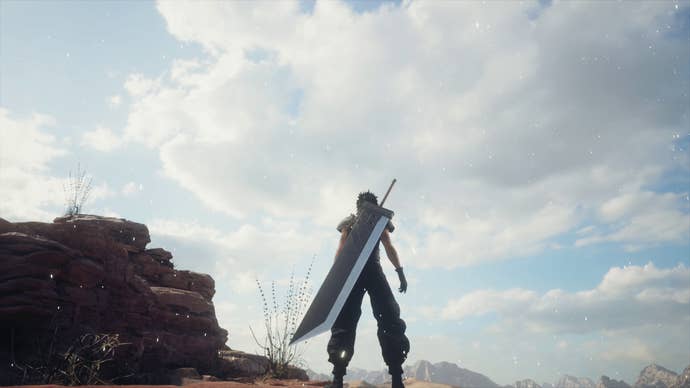
VG247: How has your relationship with the game changed over the years, in particular as you've returned to the universe with the Compilation and Remake? Has how you feel about the game changed over the years, with a retrospective eye?
Yoshinori Kitase: Ever since I joined the games industry, I have always set myself the theme of “creating drama through games”. With the original Final Fantasy 7, the shift from the style of the previous 16-bit hardware to the latest 3D CG allowed for massive increases in the power to depict characters and stories and became the origin of the dramatic storytelling style that is still used in the latest FF titles today.
On the other hand, when I looked back at that game, the original model for Cloud was only made of 400 polygons and looked a bit like a doll carved out of wood, so the older I got, the more I wanted to update him.
The original Final Fantasy 7 has been loved by the fans for over 20 years, but I started to feel that I didn’t want it to finish up as something in an archive, and wanted to make it a title that continues to be loved for another 100 years to come.
That is what Final Fantasy 7 Remake is.
Final Fantasy 7 Remake Part 2 – or Final Fantasy 7 Rebirth – is coming Winter 2023.










